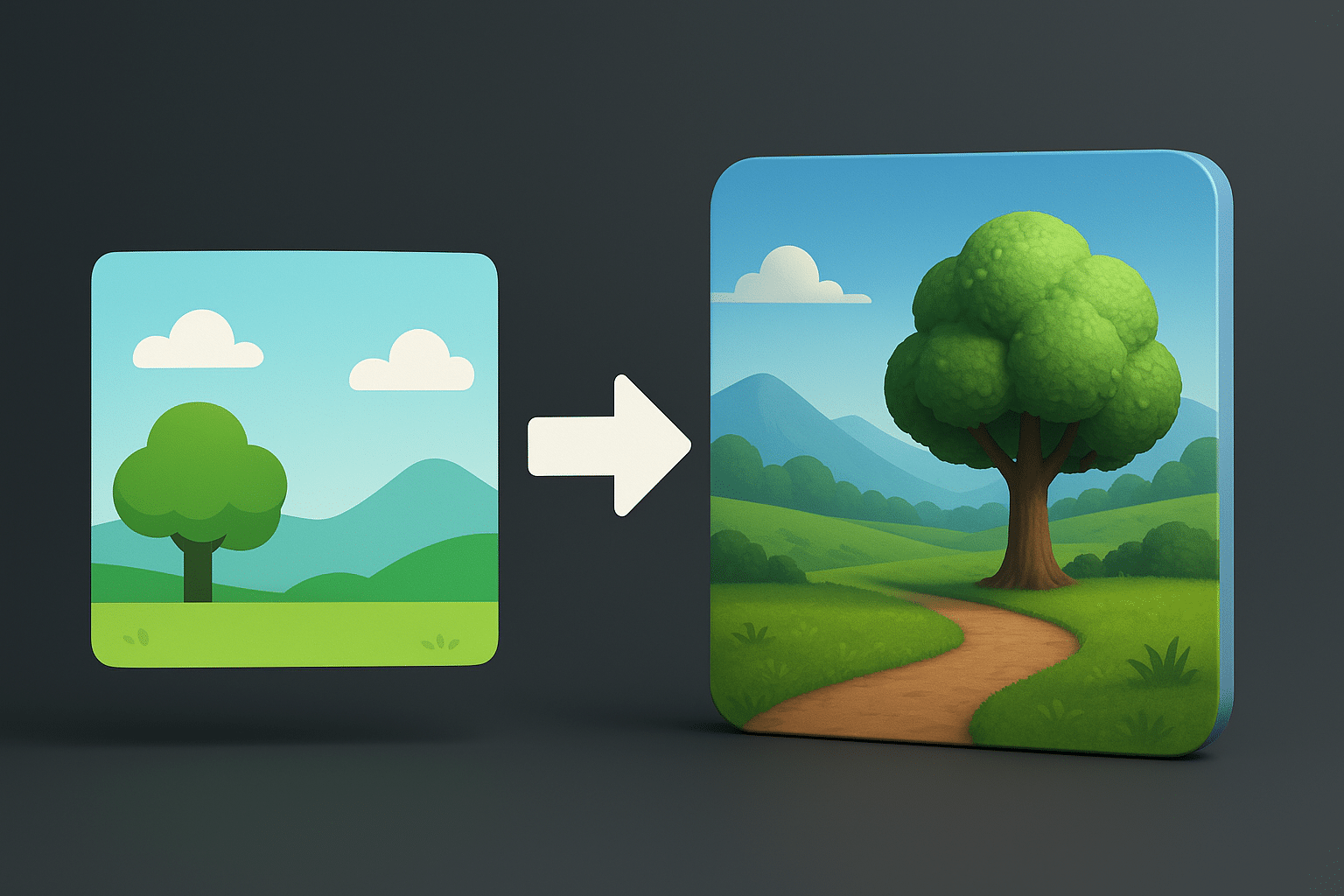Depth is always an important aspect when it comes to immersion in the increasingly evolving field of digital art and game development. But not every project should or can make the jump from 2D to full 3D production.
The challenge of creating and working with 3D assets, polygonal models and a constantly evolving real-time rendering pipeline can also be expensive, time-intensive and creatively limiting for studios who live by the stylized 2D art sword. Thankfully, there’s an artistic middle ground – 2.5D – where artists can create dynamic, over-sized and dimensional experiences whilst remaining true to their 2D roots.
2.5D isn’t a compromise — it’s an advantage for art and design. It allows developers to keep the appeal of 2D art and blend it with the movement, depth, and animation that we’ve come to expect from 3D products. Whether you’re building side-scrollers, Action Adventure games or even narrative-driven ones, there is always a variety of ways to make the visuals pop without forcing you to reconstruct your entire asset library.
Understanding the 2.5D Approach
2.5D is used to describe the apparent depth of 3D objects when represented in a 2D plane (as with sprites) or 2D image \( e. Unlike real 3D graphics where every object has genuine depth and perspective, 2.5D relies on clever layering, animation and lighting effects to create the illusion of depth. The viewer has the sensation of peering into something that continues off the flat screen, although actually every component is a flat image.
This hybrid system would be particularly useful in mobile and independent games, where just as much importance is placed on performance, speed and style as realism. Talented studios like game slot art studio frequently leverage 2.5D design to really bring their environments, characters, and backgrounds to life—offering players an engaging experience full of depth and vibrancy without the expensive strain of 3D rendering.
Parallax Scrolling: A simple way to Add Depth
Parallax scrolling is the foundation of 2.5D visuals. Establish your central focus In film, one way to convey depth is through parallax: Layering background objects to scroll at slightly varying speeds compared to those in the foreground.
Here’s how it works:
Foreground (such as grass, trees or UI) moves more quickly when the player and/or camera are panning.
The middle moves along at an easy, intermediate pace filling the gap.
The background (mountains, clouds, stars) slowly move past you, representing the beginning of space.
This modest speed variation is how we perceive depth in real life — objects near us move faster than far away ones. When executed well, it turns a flat 2D scene into a dynamic world filled with atmosphere and movement.
Engines nowadays (such as Unity or Unreal) make it a piece of cake to setup parallax effects, which is often further enriched by using shaders or post-processing filters. For instance, a side-on platform game might look as if it were in layers — with luminous cityscapes or floating clouds off in the distance that suggests headway beyond what’s right in front of the player at any one time.
Sprite-Based 3D Illusions
Another ages-old 2.5D trick is sprite animation. Instead of drawing, say MP3 players however many times from how ever many angles by hand as a full 3D model would do, artists can do the thing normal people do and draw or render it four or whatever ways then just cycle amongst them to pretend that’s rotation.
This method works wonders for:
- Character turns or idle animations
- Rotating items such as coins, gears or relics
- Rotating icons or power-up symbols
It is possible, for example, to make an animated gem or tool from a series of hand-drawn frames each representing it at a slightly different angle. Smoothly animated, the overall effect looks believable enough in 3D, even if it’s all flat.
It’s also efficient—sprite-based animations are much cheaper to render than real 3D geometry, which makes it perfect for mobile or browser-based games that care about performance.
Dynamic Lighting and Shadows
Lighting is the most important aspect in a 2.5D design. Even the flattest of shapes can take on a three-dimensional quality when they respond to light sources. Developers can mimic the curvature and depth of surfaces by throwing in dynamic lighting.
A few common approaches include:
Soft shadows that animate or become longer as characters move around
Rolling band-shaped specular image highlights on curved object’s surface
2D sprite normal maps that enable lighting direction to be taken into account for 2D world sprites
For example, consider a character in 2D looming under a streetlight; their shadow realistically lengthens and shortens across the ground. These little cues deceive the eye into thinking it’s seeing a physical space, and imbue static images with life and tactility.
2.5D design has thanks to normal mapping changed fundamentally. Artists can arm up their textures with “depth” information painted directly into them, making them inherently interact more realistically with the lighting in-game. The result: a heightened, cinematic look delivered with second-dimensional efficiency.
The Multiplane Camera Technique
Drawn from the classical age of hand-drawn animation, the multiplane puts various 2D artwork on separate layers within a virtual 3D space. Developers create accurate motion parallax and occlusion effects by moving the camera through these layers.
Old Disney movies like Snow White accomplished this illusion with physical multiplane cameras, but modern game engines are able to do so digitally. It’s an ideal technique for:
Cinematic cutscenes
Side-scrolling adventures
Interactive environments
In a camera move, those foreground elements move faster than the ones in rear perspective, and layers naturally overlap — just as they do in real life. Using this method, even a hand-drawn forest or cityscape can feel spatial and immersive without breaking out of the 2D plane.
Why 2.5D Can Be the Right Call for Your Design
It’s not just a beauty contest, either: 2.5D has some serious strategic benefits.
Cost-effective production: 2D assets can be reused by artists, saving time and money as opposed to full 3D modeling.
Original visual style: Hand‐painted textures, old‐school animation and a refreshing, unique approach to the fantasy genre.
Performance boost: Light rendering loads so your low-end devices can perform optimally.
Flexibility: Developers can combine 2D and 3D effects particle systems, lighting or camera motion—for hybrid visuals.
For developers making games across more than one platform, 2.5D provides a way to scale up visuals without forsaking their individuality or responsiveness.
Bringing It All Together
2.5D isn’t a limitation — it’s an art form. It, in turn, forces creatives to reach beyond flat planes and use light, motion and perspective to enhance the design. A talented art team can make even the most static dwellings burst with life, and breathe animation into the simplest creature.
The point, ultimately, is not just to make 3D; it’s to make depth that feels artful and considered. Whether it’s the sparkle of a shifting gem, delicate swaying clouds in the distance or multi-layered scrolling across an urban sprawl. 2.5D magic for my 2D world.”
For developers who value that golden mean of artistic control and contemporary immersiveness, 2.5D represents the future of 2D storytelling — alive, dimensional and infinitely expressive.




